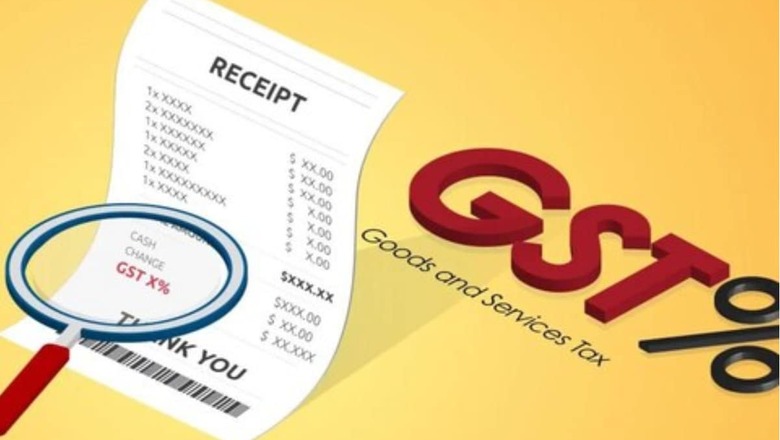
views
GSTR-1 filing has evolved since the inception of the goods and services tax (GST) law. It started with only reporting sales details but now includes a host of reconciliations before the actual reporting occurs. Some of these reconciliations are due to additional compliances that a business may be subjected to, such as the e-way bill and e-invoicing.
What Is GSTR-1?
Regular taxpayers file the GSTR-1 form under the GST law. The format requires them to report documents for all outward supplies/ sales to businesses or consumers. These include domestic or exports and taxable or non-taxable, including changes to previously reported documents such as invoices, credit notes and debit notes. Taxpayers with turnover below Rs 5 crore can file GSTR-1 quarterly. In the rest of the cases, taxpayers must file this form monthly.
Introduction To The 4 Key Reconciliations For Accurate GSTR-1
One or more of these reconciliations may apply to your business:
- Undertake a Sales Register vs General Ledger reconciliation to detect unrecorded transactions or mismatches in either of the records.
- Undertake a Sales Register vs EWB reconciliation to detect transactions not recorded in the sales register.
- Download the draft GSTR-1 from the GST Network and reconcile this data with the e-invoices from the IRP.
- Reconcile the B2C invoices/non-e-invoices from the sales register with the draft GSTR-1 on the GST portal.
Need For These 4 Key Reconciliations Before GSTR-1 Filing
The following are the reasons why the above reconciliations become necessary for taxpayers:
- Include all documents from reporting in the relevant period.
- To avoid repeat reporting of documents reported in earlier periods.
- To identify sales recorded but e-invoices not generated due to it getting time-barred, i.e., Inability to report to IRP after the 7-day window applicable for taxpayers with annual turnover equal to more than Rs 100 crore, with effect from May 1, 2023.
- To ensure accurate reporting of the taxable amounts and tax values under the right tax heads in GSTR-1.
- To avoid discrepancies during GST audits.
Many businesses filing GSTR-1 continue missing crucial reconciliations for various reasons. Many use conventional methods adopted for return preparation, such as spreadsheets and standalone tools, that do not warn them of these reconciliations. Otherwise, those aware of the reconciliations do these manually, thus spending too much precious time and needless effort.
If each team member has their way of preparing and filing GSTR-1 every month can otherwise be detrimental to business compliance. If there is a rule book or protocols for your team to follow, then make sure to add these reconciliations as compulsory steps before GSTR-1 filing.
Sales Register vs General Ledgers (GL)
This kind of reconciliation is critical for mid-sized and large enterprises, and both records are in the ERP systems of the taxpayer. Every business must compare the data appearing in general ledgers (GL), such as the revenue and output tax ledgers, with the data in the sales register.
The team must perform this reconciliation at the beginning as a part of data massaging. It is done to identify cases where sales are not recorded on ERP, to give the right treatment to unbilled and non-GST revenue, net off or contra entries, as well as pure agent transactions, and to account for manual journal entries.
Moreover, positive figures of tax values in the sales register will have negative figures of GL amount in tax GL and vice versa. So, the comparison must be made at the summary or document level, across periods or a single period, PAN or GSTIN level, keeping both records at the same levels. Define a tolerance limit to which differences between the two records can be ignored for a smooth reconciliation.
Draft GSTR-1 (GSTN) vs E-Invoices (Government E-Invoice Portal or IRP)
Usually, e-invoice data auto-populates from the invoice registration portal (IRP) into the GSTR-1 in T+3 days, i.e., it takes three days for an e-invoice to reflect in the draft GSTR-1 return and even longer at times.
Moreover, there is another variety of reconciliation where teams must reconcile the sales register with the e-invoices on the IRP. Since invoices and credit-debit notes must be reported within seven days of raising them on IRP, as explained above, it is critical to ensure this reconciliation takes place.
Sales Register vs E-Way Bills (NIC’s E-Way Bill Portal)
E-Way bills must be created for all transactions except for certain exempted goods and transactions. However, these documents can only be generated on the NIC’s e-way bill portal after raising an invoice for that transaction.
Businesses may also miss reporting certain invoices on which e-way bills were created, but such invoices may have gone underreported in GSTR-1. The department runs reconciliations between e-way bills and invoices in the GSTR-1 return to send notices for differences. Identify and take corrective actions on missing e-way bills, set tolerance limits and account for cancellations correctly with this reconciliation.
Sales Register vs Draft GSTR-1
Reconcile e-invoice data with the sales register periodically to determine discrepancies between the e-invoices and the sales register. It prevents the user from having to remove e-invoice data from the GST portal. Replacing an e-invoice on the government portal will remove the associated Invoice Reference Number (IRN).
Undertake a reconciliation of the Business to Consumer (B2C) transactions and all other non-e-invoice transactions in the sales register with the draft GSTR-1. It helps identify discrepancies due to human error when made manually or other technical errors involved in data import.
Summing up, these reconciliations commonly involve data import, massaging it in the right format for comparison and matching it to identify omissions and mismatches. Most of these actions are redundant and can be automated with the help of advanced AI and cloud-based technologies. Hence, businesses can make informed decisions to go for it based on the size of the business and transaction volume.
(The author is the founder and CEO of Clear, formerly ClearTax)




















Comments
0 comment